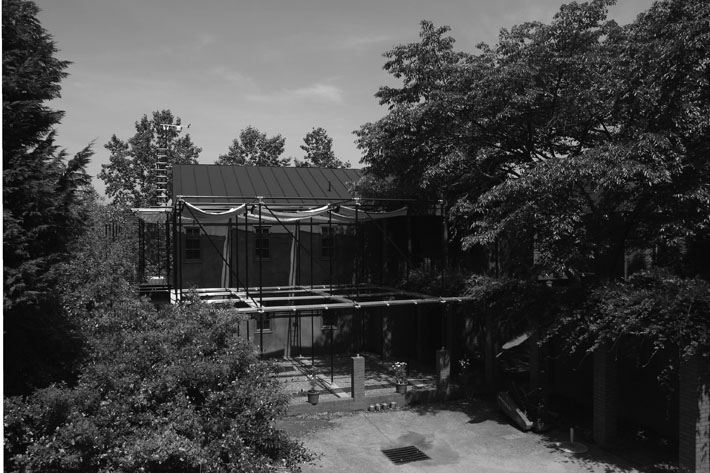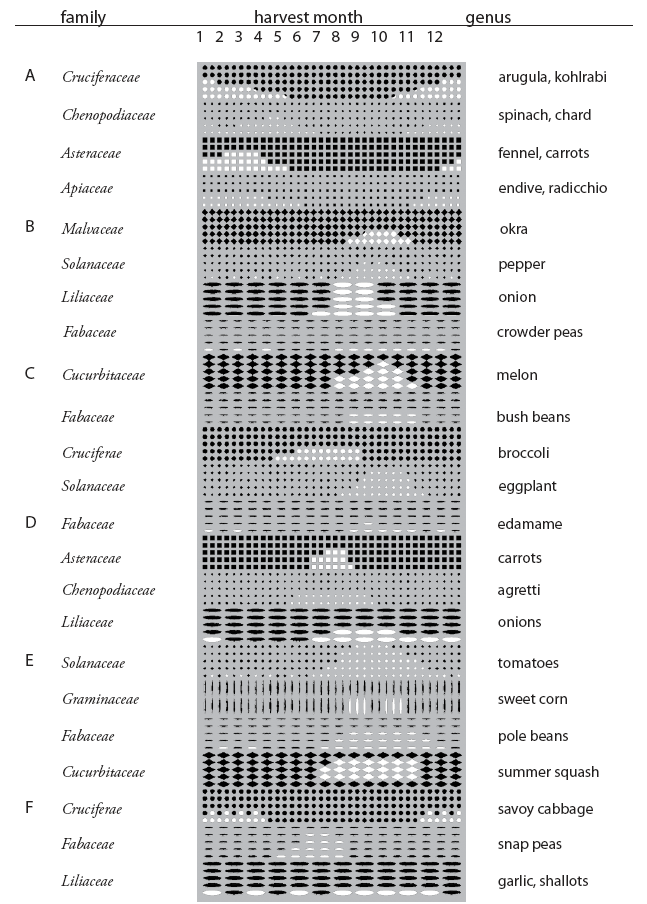“Inhabiting Liminal Landscape” in Lunch Volume 3: Territory 2008. Full text below:
Authors:Â Robin Dripps +Â Lucia Phinney
These diagrams describe a process of progressively inhabiting a landscape through building, earthworks, water works, and engaging the wild energies. They offer insights into how developing research about spatial structure, inventive fabrication, and unconventional materials can work with natural process to alter the way a site can be inhabited and made productive. Construction at the scale of the machined detail as well as the more vast scale involving coordinated choreography of large earth moving equipment has been nearly continuous for over three decades. Ideas have been tested, reconsidered, put aside for later, and even discarded altogether.
Something of an intellectual journey through the artifice of construction, the process of building and dwelling is just as strongly directed towards evolving ideas about living on the land. Local watersheds have been reconnected through constructed wetlands and waterworks. Barren fields have been restructured and replanted with native vegetation to provide habitat for animal and bird. Gardens and orchards are the locus of experiments in organic agriculture that ultimately provides a sustainable food source for inventive culinary adventures.
The land and its construction have been an integral part of our teaching and its development parallels the reconnection of the disciplines of architecture and landscape architecture at the University of Virginia. This is more than the bringing together of two disciplines since no matter how close they become there will always be that problematic gap. It is here, in this provocative liminal zone that a more complex account of the relationships between artifice and nature can grow and in turn infect in the best sense each of these incomplete modes of acting.
Spectacle
The initial idea was an interior room, an urban loft to house a wide variety of changing uses. Materials were mostly off-the-shelf industrial pieces repurposed for domestic use. Construction was simple yet articulate. Exposed ducts, pipes and wiring conduits revealed a complex inner life. Multicolored coiled cables hanging from trusses connected to a variety of machines, filmmaking equipment, music making and recording devices.
Its white double cubed exterior, somewhat at odds with such an active interior, was intended to be a contrast to the abandoned pastureland of the site. Wild, unkempt nature was both a source of wonder and a constant worry as flora and fauna threatened to encroach on this prismatic form. The spectacular setting with its long, undisturbed views towards the Blue Ridge Mountains was just that-a spectacle to be observed from within.
Path
The first extension of this interior world into the land was the leveling of the earth to the northeast and the addition of a garage-workshop. This defines an intimate outdoor room as part of a trellised entry path extending into the surrounding forest. A retaining wall to the northwest redefines the boundary between inside and out, creating a threshold between the house and its vast landscape. This new plinth establishes a horizontal line to ground the curves of the distant ridge now framed by a row of Tulip Poplar trees. These two moves create a path that splices the well-traveled route to the forest with the well-viewed sight of the mountains.
Program
Lateral enclosures to northeast and southwest amplify the interior program. Porch and stairs provide seating for the step-down theater to the northeast. To the southwest, the dining area opens onto herb terraces stepping up the slope to a semicircular hemlock hedge.
Sustenance
Blueberries and grapes frame an intensive vegetable parterre, orchard, and fungi plantation. Using materials developed in Scandinavia, Japan, and Israel, crops will thrive year-round in the hospitable Virginia solar climate. This very personal food landscape provides unique produce and cuts food-travel miles to zero.
Microclimate
Breakthrough agricultural technologies of the last 20 years create microclimates for plants to thrive well beyond their preferred climate zone. These technologies can also be used to create optimal terrain for humans. Scaffold structure wrapped in agricultural fabric creates a microclimatic layer protecting the interior from the summer sun and the winter winds. This wrap substantially reduces energy loads while facilitating free passage from inside to outside.
Hydrology
Rain falling on roofs is directed to rills on the ground that feed a new collector channel. The dining area now extends above this channel. Water is recycled through this system to supply fountains for evaporative cooling, and to provide the amphibian habitat that reduces mosquito populations. (In central Virginia, an impermeable surface will feed and replenish a basin 1/8 of its size. Thus, waterfront property is available even on hilltops.)
Landform Geometry
Local rectilinear geometrical structure reaches out to engage the curvilinear structure of the landform. The subtle underlying geometries of the land are revealed through geometrical terraces descending to the pond’s similarly shaped concrete wall that continues as a spillway in the form of a water stair. An aluminum catwalk suspended over the water furthers the arc of the pond but then links to a more meandering path following the natural swales that channel surface water into a constructed wetland and then the pond. Radii of these geometries orient the earthen dam and tractor access route to the extended axes of the house.




















